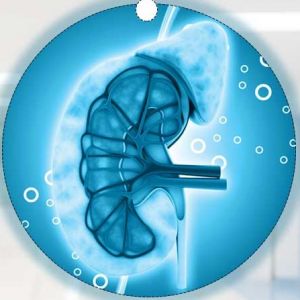Prevent kidney function with nephrotic syndrome treatment in AyurvedaPosted by Vicky Kumar on May 3rd, 2019 Summary Nephrotic Syndrome treatment in Ayurveda at Karma Ayurveda is the right choice for such symptoms whenever you experience them. Article The nephrotic disorder is characterized by the accompanying attributes:
Underlying mechanisms Our blood is filtered by the kidneys. The kidney comprises of many little filtering units known as Glomeruli. In these Glomeruli(s), waste substances and water go through the channel and stream into the pee, while the substances that are critical to the body don't pass the channel and stay in the blood. In the nephrotic disorder, this procedure is upset on account of a break in the glomeruli. This causes lost proteins into pee (proteinuria). In this way, excessively little of these proteins stay in the blood (hypoalbuminemia). Loss of proteins prompts salt and liquid maintenance. This causes swelling of the body (edema). Higher fat generation by the liver and diminished fat corruption results in higher fat substance in the blood (hyperlipidemia). Symptoms
Which forms are there? The nephrotic syndrome might be essential or auxiliary. An optional nephrotic syndrome implies that it is the consequence of another disease, for example, malignancy, HIV-disease or diabetes. The most well-known sorts of essential nephrotic syndrome are the 'negligible change nephropathy' and the 'central segmental glomerulosclerosis'. 75% of youngsters and 20% of grown-ups with nephrotic syndrome have insignificant change nephropathy. This implies a renal biopsy (this is the evacuating of an extremely little bit of the kidney to look at it with a magnifying instrument) demonstrates just minor deviations in the glomeruli (kidney channels). This sort of nephrotic syndrome can, for the most part, be effectively treated with medicines (corticosteroids). In 60% of cases, in any case, there are at least one backslides of the disease, which requires another treatment with corticosteroids. These backslides can be activated for instance by contaminations, immunizations or stress. The second type of nephrotic syndrome is because of central and segmental glomerulosclerosis. In this type of nephrotic syndrome, little scars are shaped in the kidney channels (glomeruli). On account of these scars, the glomeruli can never again legitimately satisfy their capacity. This sort of nephrotic syndrome is increasingly hard to treat and can prompt a total loss of kidney work. Contingent upon the seriousness and the clinical course of nephrotic syndrome, the disease can significantly affect a day by day life of the patients and their families. How is it diagnosed?
Why should one take Ayurvedic medicine for nephrotic syndrome? We as a whole consider the adequacy of medications which our specialist suggests us. Numerous individuals locate the allopathic medicines and treatment connected with some symptoms. Other than this, numerous kidney patients need to go for a kidney transplant or on dialysis, notwithstanding when they take the allopathic medicines regularly. Here an inquiry emerges that what is the correct medicines and treatment for nephrotic syndrome. Nephrotic syndrome treatment in Ayurveda is the correct answer. All the Ayurvedic medicines given by Karma Ayurveda are not in a connection with any hazard or symptom. This is the main reason by which, Karma Ayurveda had earned the trust of numerous patients since 1937. By the correct treatment, Dr. Puneet Dhawan spared numerous patients from dialysis and kidney transplant. In the event that you are a kidney tolerant and are searching for the correct treatment, at that point Karma Ayurveda will be the ideal destination for you. Like it? Share it!More by this author |


